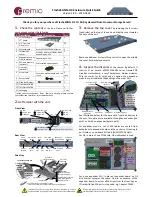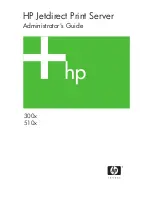
MAP 0280: 604 or 604e High Node Minimum Configuration
MAP 0280: 604 or 604e High Node Minimum Configuration
Attention: After the lateral planar 2 card is installed and the system is powered-up, the system ID is
downloaded to the lateral planar 2 card from a backup source within the system. This ID becomes perma-
nent on the lateral planar 2 and cannot be altered without special tools, Therefore, the lateral planar 2
cannot be transferred to another system. It must be returned to the plant of manufacture as a new defec-
tive part.
Attention: Lateral planar 2 and SIB EEPROMs contain the SYSID of the system. When one of the two
components is to be replaced (for example the lateral planar 2), the SYSID information is copied from SIB
EEPROM into the lateral planar 2 EEPROM when you start the system.
To avoid losing this information, it is not possible to replace both components at the same time. When
both components are to be replaced, proceed as follows:
1. First substitute the SIB and start up the system: the SYSID information is copied from lateral planar 2
EEPROM to the SIB EEPROM.
2. Substitute the lateral planar 2 and start up the system: the SYSID information is copied from SIB
EEPROM to the lateral planar 2 EEPROM.
This MAP is used to locate defective FRUs not found by normal diagnostics. For this procedure, diagnos-
tics are run on a minimum-configured system. If a failure is detected on the minimum-configured system,
the remaining FRUs are exchanged one at a time until the failing one is identified. If a failure is not
detected, FRUs are added back until the failure occurs. The failure is then isolated to the failing FRU.
Notes:
1. The Graphical User Interface (GUI) Node Front Panel Layout may not release the serial port. It is
necessary to issue:
s1term -Gw
Frame# Node# to take the serial port from the GUI and display the BUMP prompt and
gain access to BUMP functions.
2. Ensure that all node 3-digit display summaries are up for the frame in which the node being serviced
is located. This is the only reliable way to monitor for codes referenced in this MAP.
3. Install the memory cards in a right-to-left sequence beginning with slot A, and then continuing with
slots B, C, and D. Memory cards must be installed with no empty slots between installed memory
cards.
4. Install the CPU cards in a right-to-left sequence beginning with slot P, and then continuing with slots
Q, R, and S. CPU cards must be installed with no empty slots between installed CPU cards.
Attention: When you disconnect a SCSI cable from the DASD, it is possible that some of the data
required to IPL the node will be unavailable. This can happen if a required filesystem is fully or partially on
the disconnected DASD. In this case, the node will only boot to a code in the range 517-518 or 551-557;
consider this a successful IPL for purposes of this MAP only.
Although boot disk is typically set to
hdisk0 (which is typically the disk located in the lower CPU chassis
DASD tray) it is possible that some other disk is defined as the boot disk. You can check the boot disk for
this node using
splstdata -b
(then look at address jumpers on the disks). If possible, keep this boot disk
in the configuration, even if it means physically moving the boot disk from the I/O expansion chassis to the
CPU chassis.
The MAP steps instruct you to reduce the system to one or more of the following configurations:
Chapter 1. Maintenance Analysis Procedures (MAPs)
1-145
Summary of Contents for RS/6000 SP
Page 1: ...RS 6000 SP IBM Maintenance Information Volume 2 Maintenance Analysis Procedures GA22 7376 01...
Page 2: ......
Page 3: ...RS 6000 SP IBM Maintenance Information Volume 2 Maintenance Analysis Procedures GA22 7376 01...
Page 8: ...vi RS 6000 SP MAPs...
Page 10: ...viii RS 6000 SP MAPs...
Page 16: ...xiv RS 6000 SP MAPs...
Page 20: ...xviii RS 6000 SP MAPs...
Page 60: ...MAP 0130 Processor Node Figure 1 7 Thin Node High Level Diagram 1 40 RS 6000 SP MAPs...
Page 383: ......
Page 387: ......
















































